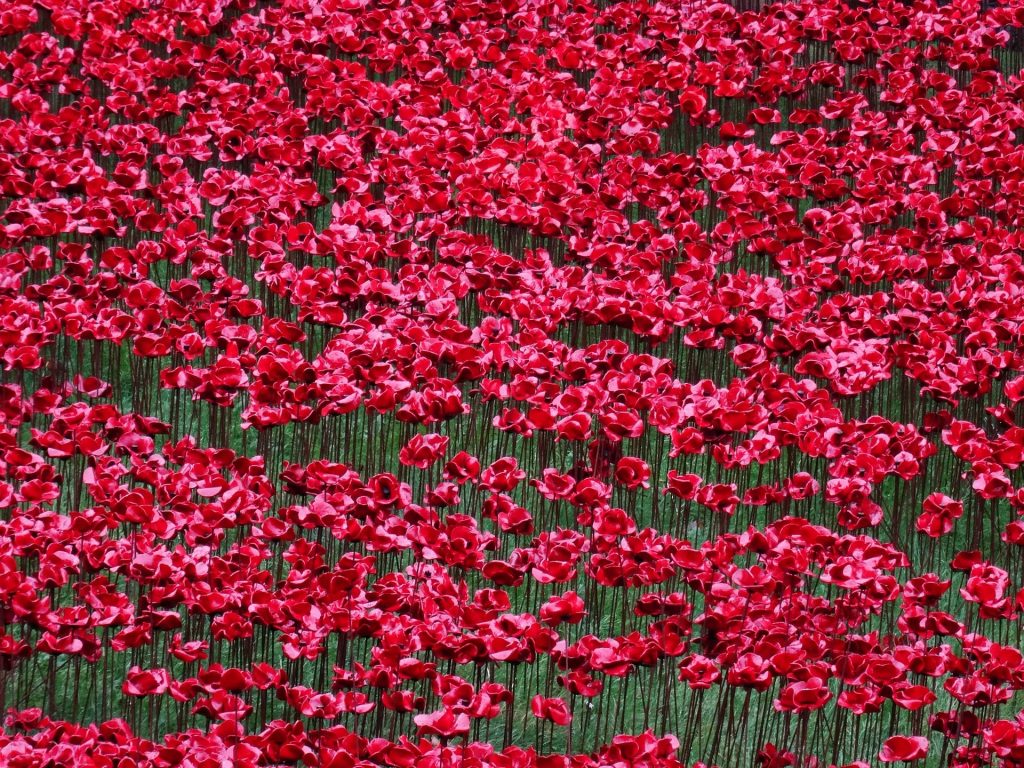
A moving tribute
In 2014 888,246 hand-made ceramic poppies were planted in the moat surrounding the Tower of London to commemorate the 100th anniversary of Britain’s involvement in World War I.
A collaboration between British theatre designer Tom Piper and Derby-based ceramic artist Paul Cummins, the poppies were planted by 21,000 volunteers over four months to create the installation. Blood Swept Lands and Seas of Red featured swathes of red flowing around the ancient walls and a floral deluge pouring out of a ‘weeping’ window.
After the event, each poppy was packed into a commemorative box and sold for £25 with the proceeds going to six affiliated charities: SSAFA, The Royal British Legion, Help for Heroes, Coming Home, Combat Stress and Cobseo.
Sadly I didn’t get to see the installation when it was at the Tower of London but I couldn’t have ignored the impact that it had. Nightly news stories charted the progress of filling the moat, the visits by dignitary after dignitary and the mounting public hysteria – with closures at nearby tube stations due to over-crowding – as the installation drew closer to its eventual dismantling.
Two parts of the installation – Weeping Window and Wave – went ‘on tour’ to 19 locations across the UK between 2014 and 2018 before making their final homes at the Imperial War Museums in London and Manchester respectively.

War inflicts terrible losses on individuals, families, communities and society-at-large yet in spite of it all, life goes on. In the same way this moving tribute carried on, made accessible to millions of people around the country and continuing its legacy as part of permanent IWM collections.
But what I loved most is how the public’s imagination was captured by storytelling.
While Blood Swept Lands and Seas of Red was noble in its purpose – to pay tribute to the 888,246 lives lost during the war – being an anniversary meant that there were many noble causes clamouring for the public’s attention and purse that year. But like all good stories, it was the quest – the sheer scale, imagination and improbability of filling the Tower’s moat – that the British people took to their hearts.
They became part of the story.
Volunteering to install hundreds of thousands of delicate red blooms and then ‘harvest’ them months later. Visiting in droves to wonder at this bold combination of imagination, artistry and statement. Purchasing each blood-red poppy to commemorate lost loved ones and raising an estimated £15 million for the six affiliated charities.
That’s the power of inviting people in to be part of your story.
Making your people – your customers, your employees, your partners, your community – part of an heroic enterprise galvanises them to spend their time, their energy and their money on realising your vision because they share it. They buy into the story you tell them – the authentic one about your purpose, your passion, your commitment and your view of the future.
It’s what the very best leaders do. From Oprah to Gandhi, from Richard Branson to Steve Jobs, from David Attenborough to the original master storyteller, Walt Disney.
They tell stories that resonate and move people to action – because they are about the things that people really want to hear.
Purpose, passion and a commitment to a better future.





